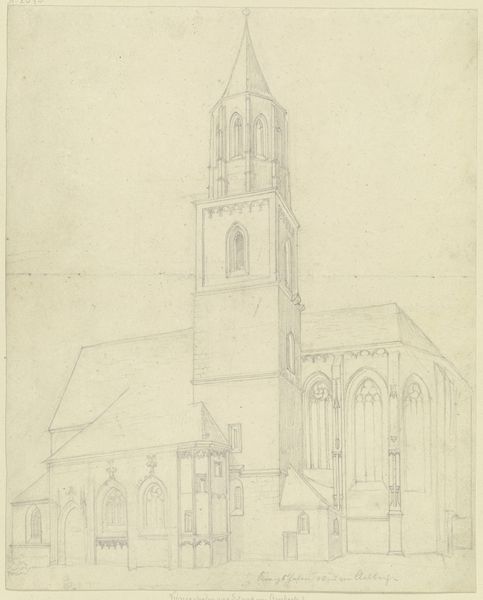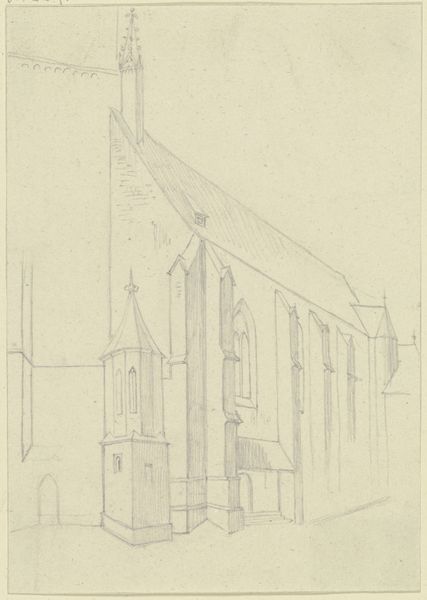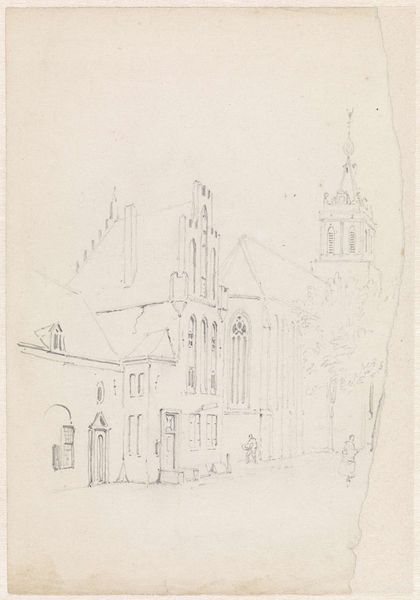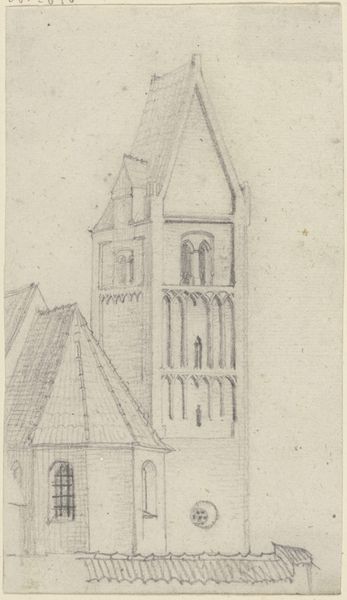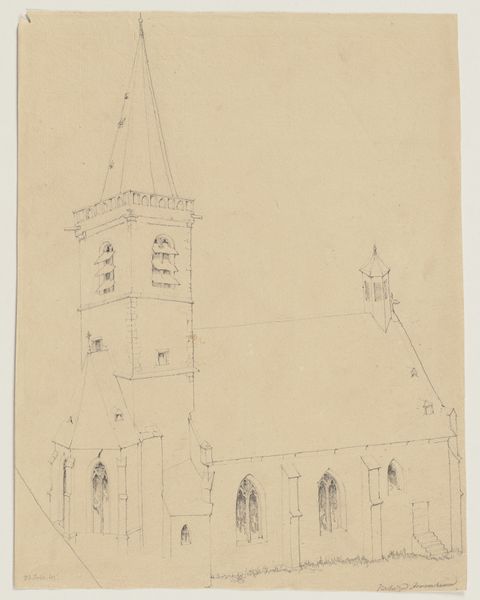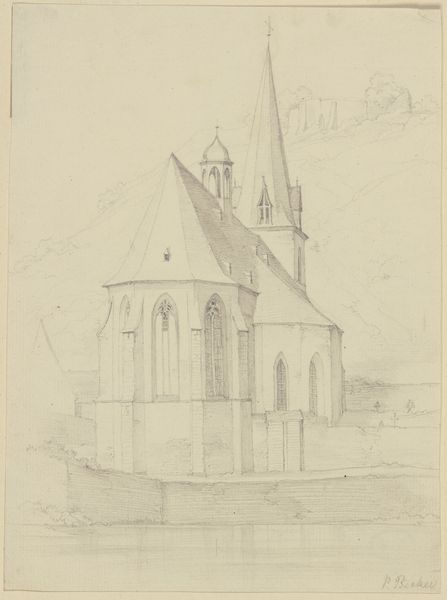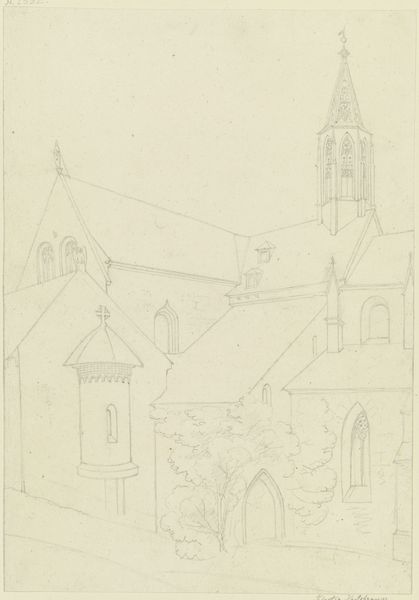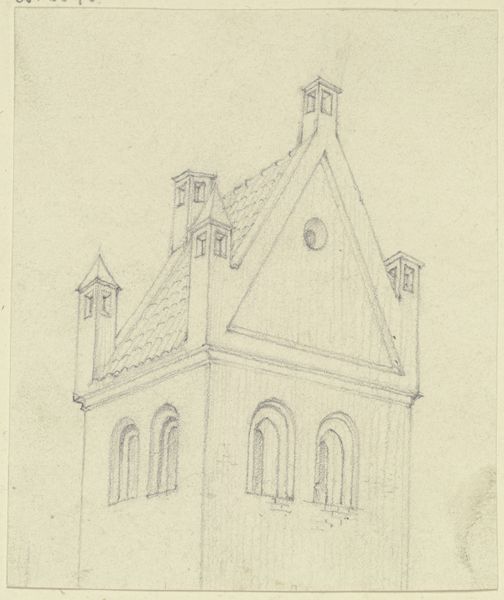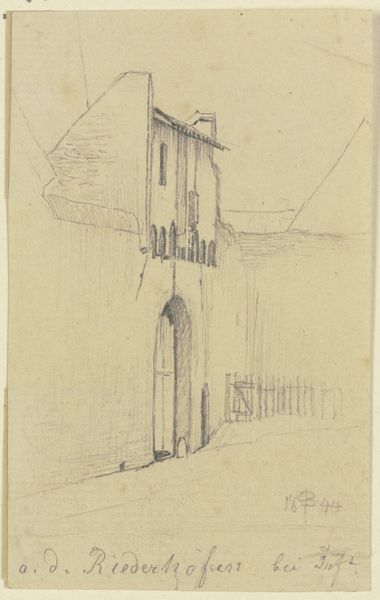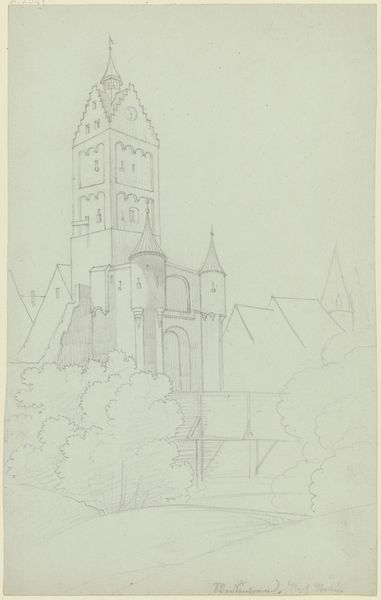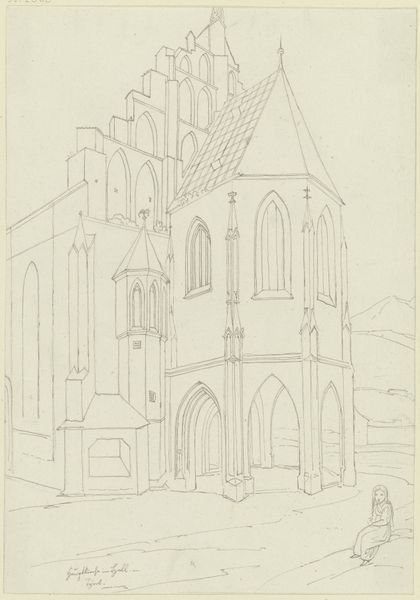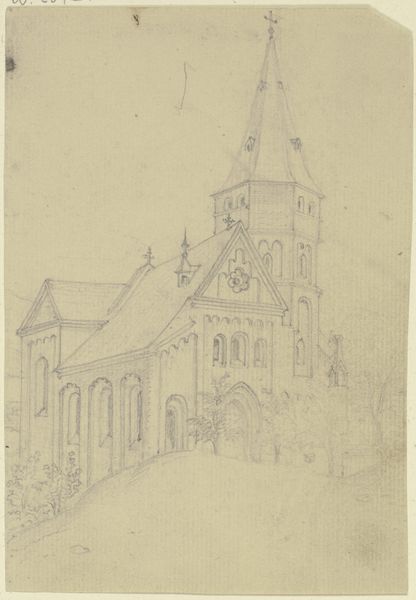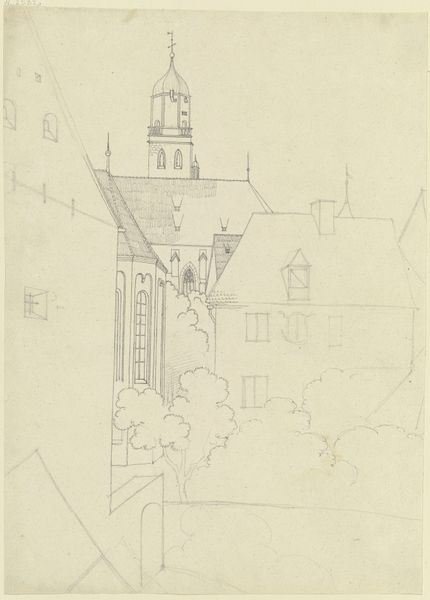
drawing, paper, pencil, architecture
#
drawing
#
16_19th-century
#
neoclassicism
#
landscape
#
paper
#
pencil
#
architecture
Copyright: Public Domain
Karl Ballenberger made this drawing of Heilbronn Abbey using graphite on paper. The material and process are straightforward, yet worth considering. Graphite pencils, even in the early 19th century when this was made, were relatively inexpensive and easily portable, making them ideal for sketching architectural subjects *en plein air*. Consider how the qualities of graphite – its ability to create fine, precise lines and subtle gradations of tone – influence the image. Ballenberger uses these qualities to capture the architectural details of the Abbey, from the pointed arches to the rose window. But it’s not just about accuracy. The medium also allows for a certain lightness and transparency, lending the image an ethereal quality. The artist's hand is evident in every line, reminding us of the direct connection between the artist and the subject. Ultimately, this drawing exemplifies how even the simplest materials, combined with skilled technique, can yield profound aesthetic results, and can offer valuable insights into the cultural and social context in which it was created.
Comments
No comments
Be the first to comment and join the conversation on the ultimate creative platform.
